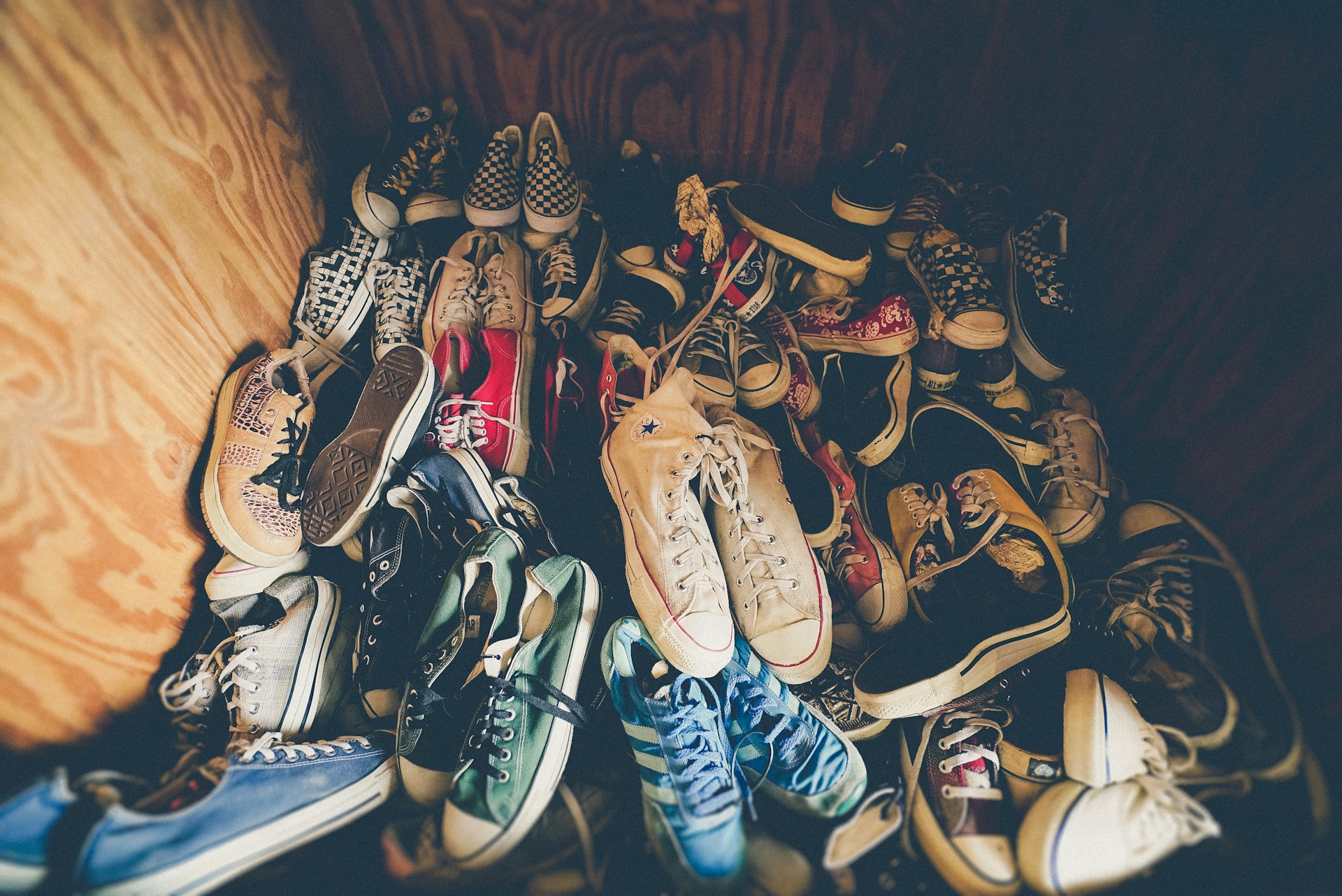.svg)



The footwear industry is still dominated by a take-make-discard model. In Europe alone, close to 1.2 million tonnes of footwear are discarded every year. Of this, an estimated 80% is landfilled or incinerated, 15% is reused, and only 5% is recycled. This low recycling rate is the result of several persistent barriers: the lack of dedicated recycling solutions, technological limitations, and the complex design of shoes, which makes disassembly and material identification extremely difficult. On top of this, weak demand for recovered materials and the absence of price and policy incentives prevent recycling from becoming economically viable.
Another major challenge is a lack of understanding of what happens to footwear after use. Currently, there is no granular data on footwear waste composition. Such information would be critical for tailoring recycling technologies to the most common materials and assembly methods. Thus, gathering this data is a crucial first step towards building a circular footwear industry.
With this in mind, Fashion for Good launched the Closing the Footwear Loop project, bringing together 17 leading fashion and footwear brands and their existing circularity programmes. The initiative aims to tackle the complex barriers to circularity in the footwear industry and support the transition from a linear ‘take-make-dispose’ model to a circular one.
At Circle Economy, we developed a dedicated methodology for Phase one of the project, which focuses on mapping the post-consumer waste stream. Our role was to bridge knowledge gaps and generate insights needed to support circular initiatives. The process began with understanding stakeholder needs and the required level of data detail. We typically work backwards from industry challenges—combining stakeholder input, literature review, and knowledge of existing end-of-use pathways—to design methodologies that deliver the most relevant insights.

This approach builds on years of experience from projects such as Sorting for Circularity Europe, Sorting for Circularity India, and Sorting for Circularity Rewear. These methodologies have proven valuable not only for our teams but also for stakeholders worldwide who seek to understand waste streams and the nuances of textile waste management. Importantly, they allow us to engage directly on the ground, observing how culture, geography, and infrastructure shape waste ecosystems in real time.
To capture the full complexity of footwear waste, we combined visual inspection, manual sorting tools, and digital instruments. Alongside this, we tested early-stage technologies to evaluate their feasibility and accuracy. For composition identification, we worked with handheld and desktop near-infrared devices developed by Matoha. CETIA’s ID Shoes and Sensorhub were used for disruptor detection and image capture, while additional data points were collected manually on-site.
The manual sorting process took place at CETIA's facility in Hendaye in late July. Over the course of one week, we experimented with the methodology to refine it and improve productivity. Each shoe was analysed against 13 individually captured data points—or more for multi-layered shoes—including archetype, material composition, disruptors, assembly techniques, damage, and other characteristics relevant for understanding post-consumer footwear waste. In total, we analysed a random sample of 1,500 non-rewearable shoes, ensuring as diverse a representation as possible of footwear currently being discarded.
Our findings shed light on the scale of the challenge. Shoes overwhelmingly featured glued bonding methods, carbon black pigments, and a high proportion of synthetic and composite materials—all of which significantly complicate recycling. These materials and design features remain major barriers to developing effective footwear recycling infrastructure and technologies.

At the same time, the prevalence of common archetypes such as lifestyle and performance shoes offers potential entry points for innovation. If design-for-recycling principles are adopted upstream, these categories could be leveraged to build scalable circular solutions. From here, for Phase two of the Closing the Footwear Loop Project, circular.fashion is developing circular design principles to establish a comprehensive roadmap for circular footwear design. Lastly, in Phase three promising end-of-use innovations will be validated in joint pilots
The full findings will be shared in an upcoming report summarising the outcomes of the Closing the Footwear Loop project. Beyond offering a snapshot of today’s footwear waste landscape, the report will highlight opportunities for recycling innovation, infrastructure development, and policy interventions that can accelerate circularity in the footwear sector.
Ultimately, Closing the Footwear Loop is not just about managing waste—it’s about reimagining how shoes are designed, produced, and recovered. By working collaboratively across the value chain, we can move closer to a future where every shoe has a second life, and circularity becomes the norm rather than the exception.
